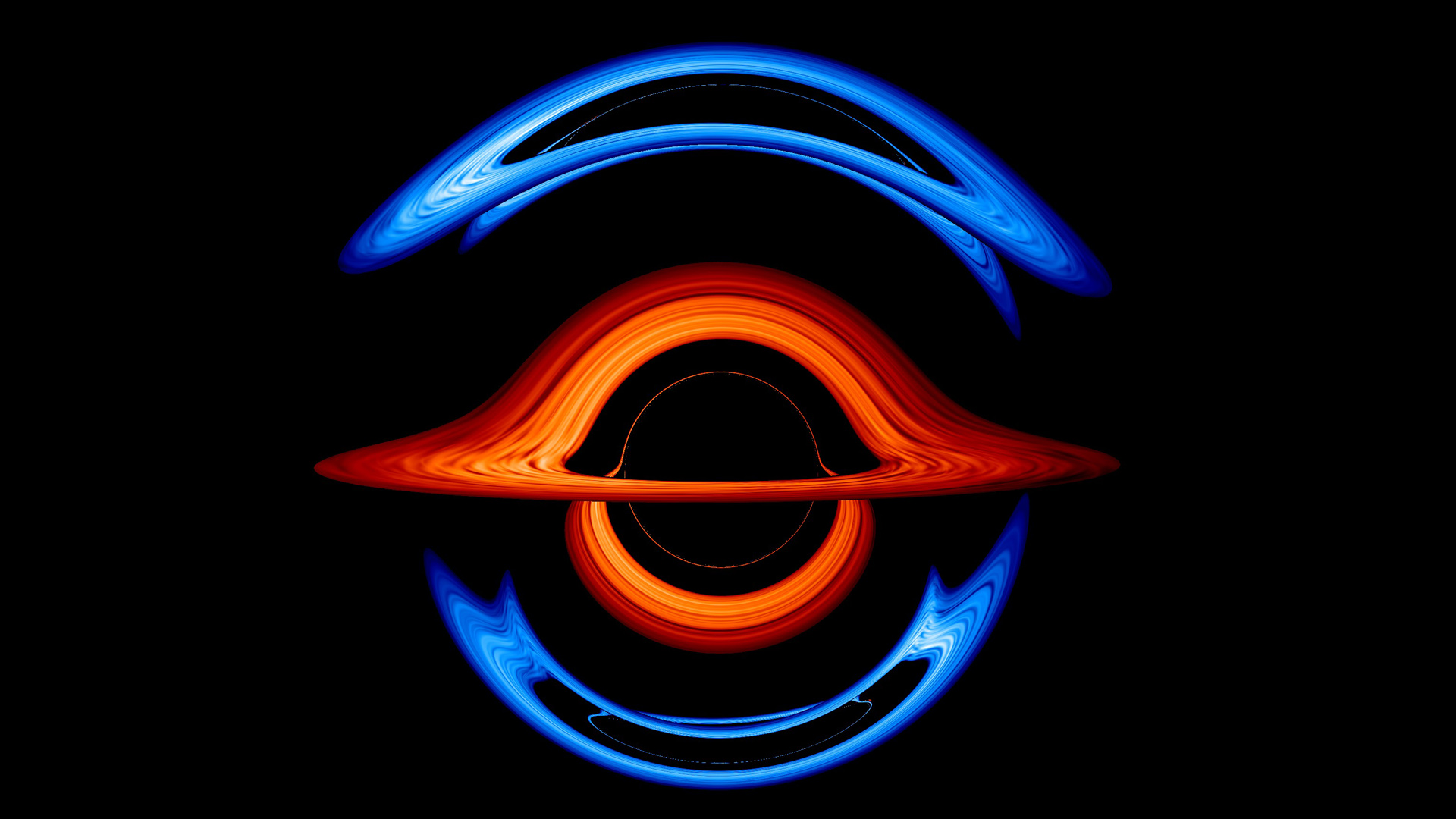Watch monster black holes dance in this mesmerizing NASA animation
A stunning new animation from NASA shows the entrancing dance of two monster black holes in orbit around each other.
The black holes — which each contain millions of times the mass of the sun — are shrouded in bright, hot, churning gas called an accretion disk. The new animation shows how the black hole duet distorts and redirects light emanating from each other's accretion disks. As one black hole passes in front of the other, its gravity warps the light of its companion, creating a sequence of entangled arcs of glowing gas as if seen in a funhouse mirror.
"We're seeing two supermassive black holes, a larger one with 200 million solar masses and a smaller companion weighing half as much," Jeremy Schnittman, an astrophysicist at NASA's Goddard Space Flight Center in Greenbelt, Maryland, said in a NASA statement. "These are the kinds of black hole binary systems where we think both members could maintain accretion disks lasting millions of years."
Related: 10 huge black hole findings from 2020

The team created the new visualizations using software at NASA's Goddard Space Flight Center to compute how the light from the accretion disks moves around the two companion black holes.
In the NASA animation, the black holes' accretion disks are shown in different colors, which represents the difference in their temperature and makes it easier to track the light sources as they twist and wind around each other. The smaller black hole experiences stronger gravitational effects, which produce higher temperatures, heating the gas in its accretion disk. In turn, hotter gas gives off light closer to the blue end of the spectrum, whereas the accretion disk of the larger black hole is shown in red, according to the statement.
Viewed from the side, the gas in the accretion disks looks brighter on the left side than it does on the right due to the effects of Einstein's relativity theory. The left side appears brighter because the glowing gas is rotating toward the viewer, whereas the gas on the right side appears slightly dimmer as it moves away. In the animation, the black holes also appear smaller as they approach the viewer and larger when moving away — a phenomenon known as relativistic aberration. However, these distortional effects are not seen when viewing the system from above, according to the statement.
Get the Space.com Newsletter
Breaking space news, the latest updates on rocket launches, skywatching events and more!
What's more, gravitational lensing — which occurs when one object acts like a lens, magnifying and warping the images of another object behind it — creates light rings around each black hole. As the two black holes orbit each other, strong gravitational forces and the effects of relativity distort the light from the black holes so that when viewing one black hole from above, you can see a small, edge-on view of its orbiting companion, according to the statement.
"A striking aspect of this new visualization is the self-similar nature of the images produced by gravitational lensing," Schnittman said in the statement. "Zooming into each black hole reveals multiple, increasingly distorted images of its partner."
Follow Samantha Mathewson @Sam_Ashley13. Follow us on Twitter @Spacedotcom and on Facebook.
Join our Space Forums to keep talking space on the latest missions, night sky and more! And if you have a news tip, correction or comment, let us know at: community@space.com.

Samantha Mathewson joined Space.com as an intern in the summer of 2016. She received a B.A. in Journalism and Environmental Science at the University of New Haven, in Connecticut. Previously, her work has been published in Nature World News. When not writing or reading about science, Samantha enjoys traveling to new places and taking photos! You can follow her on Twitter @Sam_Ashley13.









